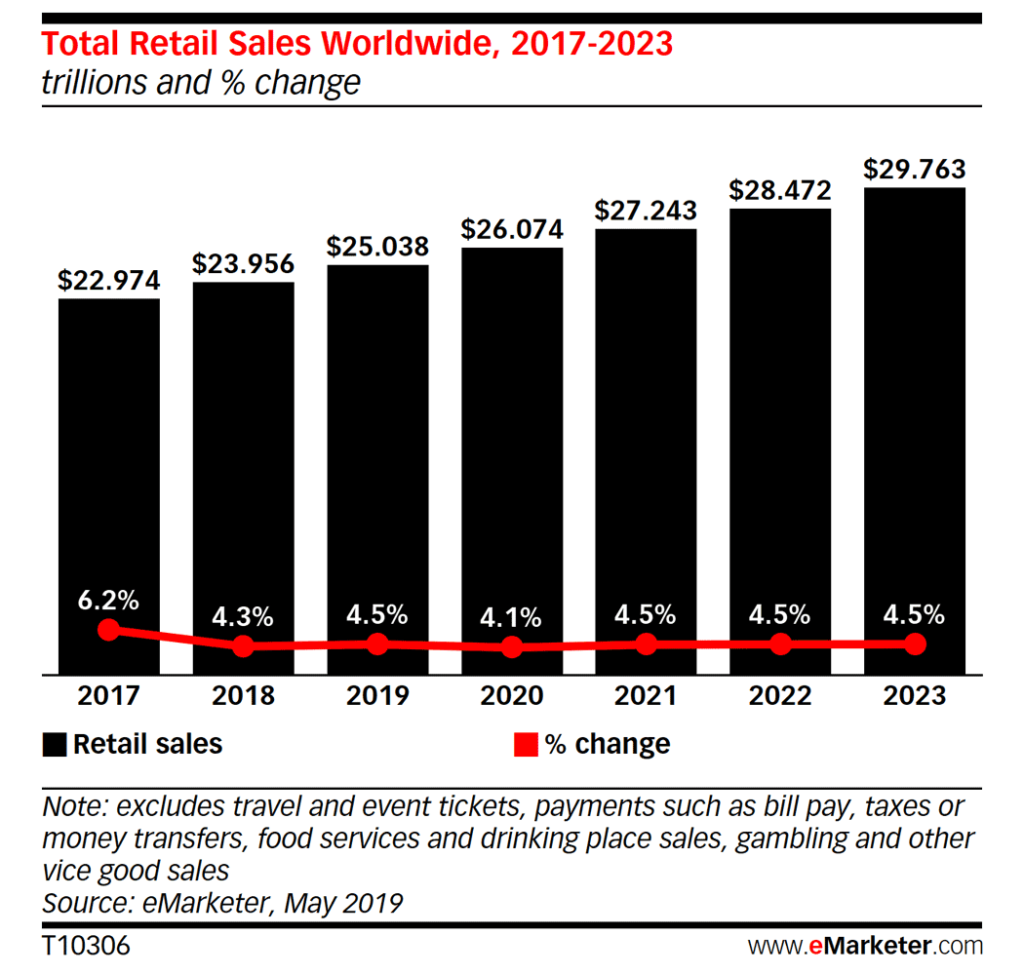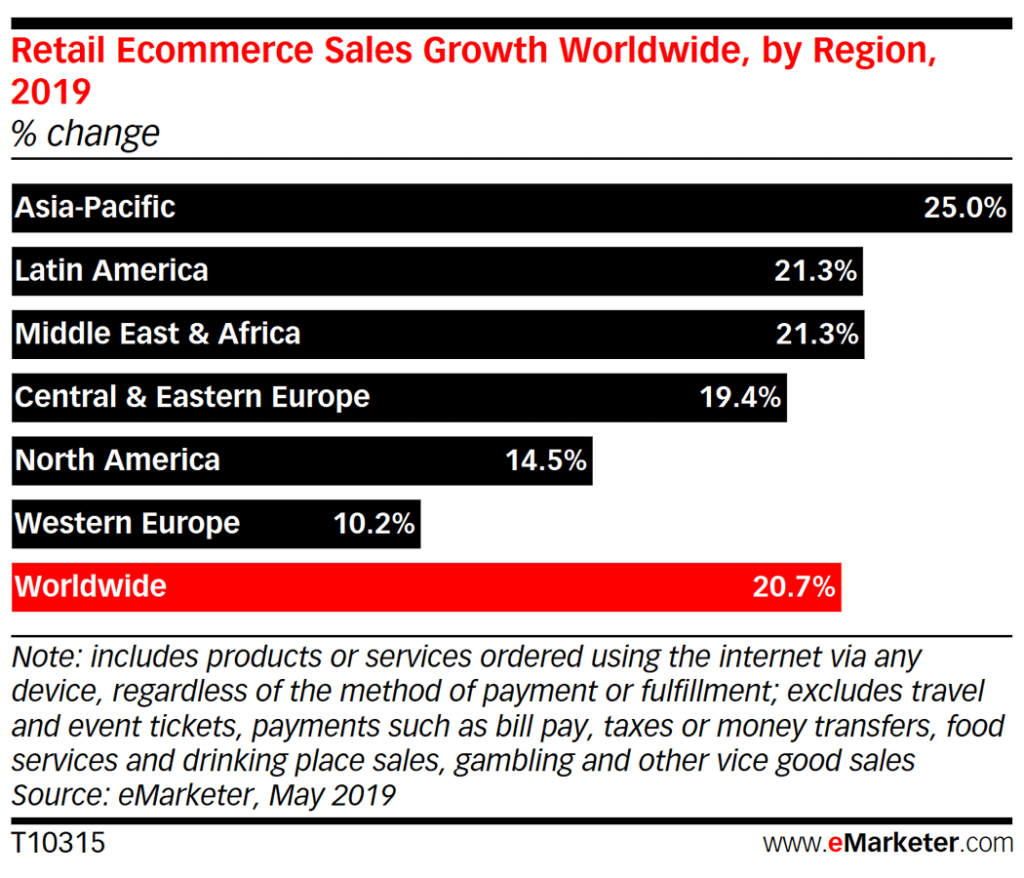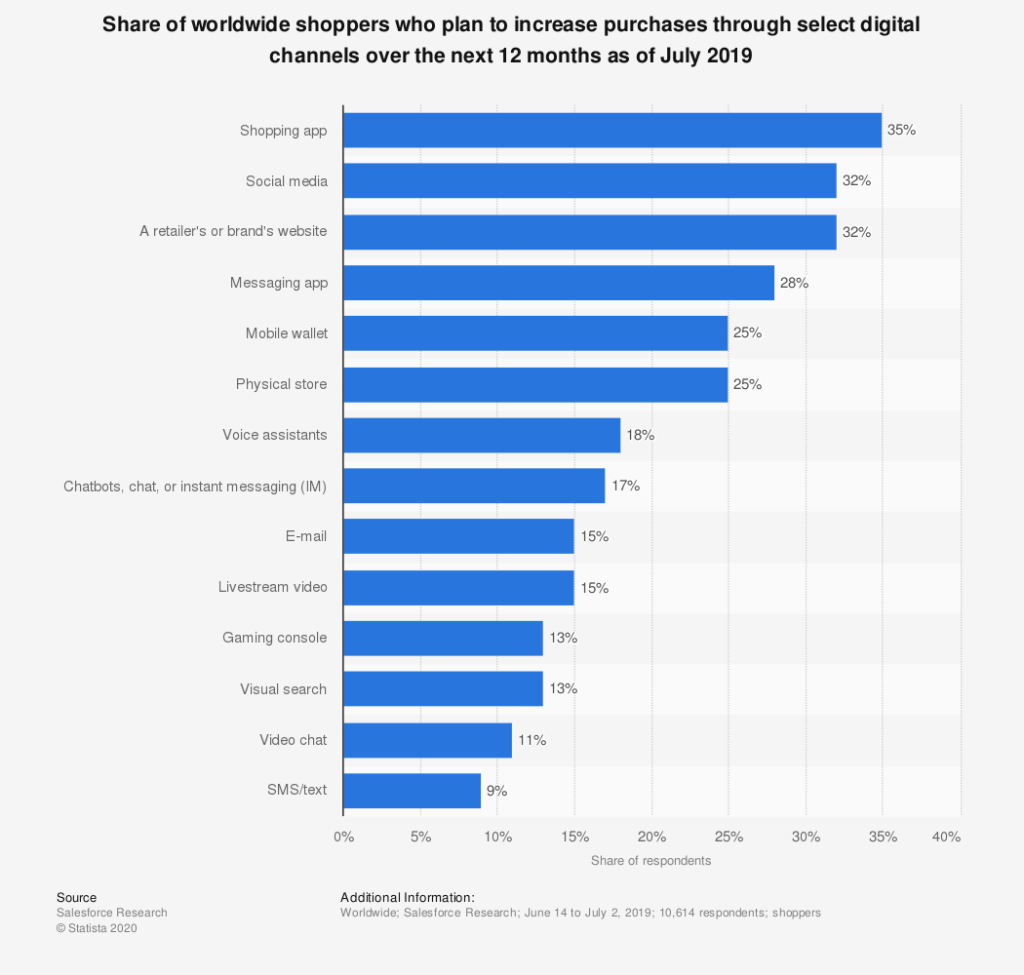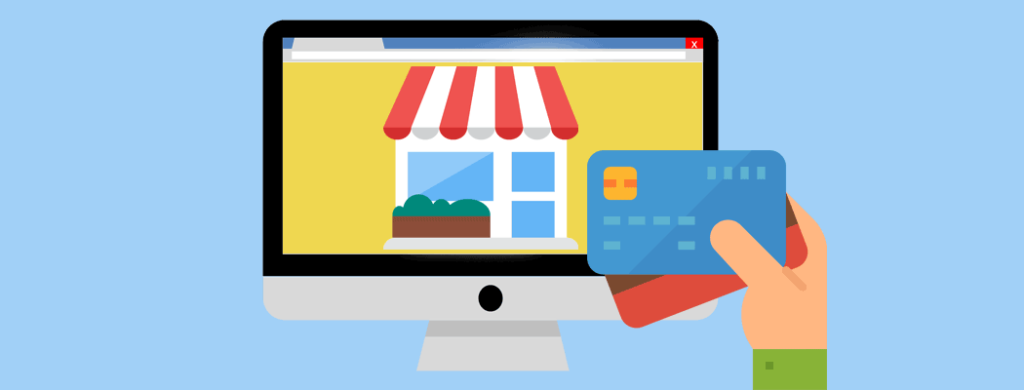Are you wondering, “What is eCommerce?” Essentially, it means online selling. If you want to open your own online store, now is the best time to do it, other than yesterday.
Retail online eCommerce sales has reached 3.53 trillion dollars worldwide. Also, 35% of shoppers in 2019 said they plan to buy more online, according to Statista. It’s also projected that online sales worldwide will grow by 22% in 2023.
More and more people are steadily shopping online. Whether you already have a physical store or you want to start your own online business, it’s definitely worth considering.
Here’s more detail to answer your question “What is eCommerce?” This includes its history, the different types of eCommerce businesses and the best ways to start your own online shop.
What is eCommerce?
The word “eCommerce” is the shortened form for electronic commerce. It means the exchange or selling of goods, services and digital items over the internet.
It’s similar to buying and selling from a physical shop. But, the difference is it’s all done online.
The seller publishes their items online for the end user to peruse at their leisure. They can purchase items any time they choose from whatever they are around the world.
Items can be purchased with credit or debit cards, data and other payment options that the seller decides to offer.
The transaction is also typically completed at the time of purchase. Unless, there’s a Cash on Delivery (COD) payment option. This means the customer can pay when the item arrives after it has been shipped.
What is eCommerce: A Brief History
The history of eCommerce begins before individuals used personal computers to browse the web, according to Concordia University.
The precursor to eCommerce was ARPAnet, which was created by the US military in the 1960s. Data regarding national security could be securely exchanged throughout the network.
In 1982, ARPAnet was upgraded to the Transmission Control Protocol and Internet Protocol (TCP/IP). This was the same technology that later become used for what would become the internet.
In 1984, the company CompuServe created an electronic mall where users could purchase items from over 100 stores online. Although, it wasn’t successful.
Then in 1994, the Netscape browser was released. Users could open it and browse any website they wanted. It used Secure Socket Layer (SSL) technology. It encrypts the connection between the website and the end user, and vice versa.
The encryption allowed for a secure connection for data to be transferred.
Not long afterwards, companies launched third-party credit card processing for online sales.
The New York Times reported on August 12, 1994 that a Philadelphian named Phil Brandenberger made the first eCommerce purchase. He bought a Sting album.
After that, the popularity and use of eCommerce exploded.
What is eCommerce: Types of Online Businesses
The classification of businesses goes beyond selling physical or digital goods and services. ECommerce is typically categorized into how the people involved sell and buy goods:
- Business to Consumer (B2C) – This is the type of eCommerce where a business sells to an individual. This is how most businesses operate. Clothing and fashion brands, the entertainment industry, most grocery and retail stores, and other similar businesses fall into this category.
- Business to Business (B2B) – When businesses sell to other businesses, this is what this kind of eCommerce is called. Examples include advertising and marketing firms, web design agencies, office supply companies and other similar businesses.
- Consumer to Business (C2B) – This type of eCommerce category centres around individuals selling to companies. A common example of this is a freelancer completing work for businesses.
- Consumer to Consumer (C2C) – Individuals exchanging goods and services with each other is consumer to consumer eCommerce. This typically looks like a person placing a classified ad targeted at other individuals in their community. Another example is using eBay to sell items.
Four Other eCommerce Business Models
There are also four other types of eCommerce models that aren’t as prominent. This is because they aren’t typical options when starting a business. This is especially true because in some cases, it’s not a business that anyone can start.
Such as with the Government to Consumer model, for example.
That’s why these other business categories aren’t mentioned often:
- Business to Government (B2G) – This is the case when a business provides goods or services to the government. This can look like secure cloud storage, construction work as well as other similar needs that governments require.
- Government to Business (G2B) – This eCommerce model is about the government selling to businesses. For example, access to data centres, paying and filing forms for taxes and incorporation, eLearning resources and other similar services.
- Government to Consumer (G2C) – Governments offer access to archived data, works of cultural significance, public records, employment and housing resources or other similar opportunities. When the government offers goods or services to citizens and individuals, it’s categorized under this model.
- Consumer to Government (C2G) – When an individual completes transactions with the governement, it falls under this category. For example, paying taxes, filling out forms for permits or licences, submitting payments, or forms online and other similar transactions.
The Steady Growth of eCommerce
Now you have the answer to your question, “What is eCommerce?” Maybe you’re wondering if there’s still opportunities when it comes to starting an online business. The data suggests that the industry is steadily growing with no signs of slowing down.
EMarketer has reports that despite economic uncertainty, the total global retail sales, including eCommerce, has been steady since 2018. It’s projected to be about the same through to 2023.

When it comes to eCommerce specifically, the data is a lot more promising with 20.7% growth worldwide in 2019.

According to Statista, users stated that they plan on increasing their online spending in 2019 and 2020. Their top three preferred ways to shop online are through an app, social media and a business’ website, respectively.

The Best Ways to Start an eCommerce Business
The largest online retailer worldwide is Amazon based on traffic. But, the data above shows that it’s not where shoppers prefer to shop.
If you decide to start your own online business, the best approach is to use the most popular mediums.
This means creating your own online store. But, while also selling on an app as well as promoting your goods or services on social media.
This approach is more significant when you consider selling in online marketplaces and website services.
When selling on Amazon, Squarespace and Shopify, for example, it’s difficult since you’re bound by their terms of service.
This means that at any time, they could decide to suspend your account. Or, increase prices and more due to a billing error or if a user incorrectly flags your items.
In the case of Amazon, seller accounts are suspended or banned without cause and at their discretion.
Services like Squarespace also state in their Terms of Service that they own your content. They have permission to use it as they see fit.
Ultimately, you don’t have full control over your business.
ECommerce with Full Control
But, open source software such as WordPress and the WooCommerce plugin means you’re in full control of your website.
You don’t have to worry about fussing about with trial and error for months or even years. Instead, create a stunning website built for success right out of the gate. Hire a trusted and verified WooCommerce expert agency or developer.
They have the knowledge of how to increase sales and conversions, and have it down to a science. They also have the tools ready to go to help you grow your business and conversion rate.
A conversion rate being the number of users that make a purchase. This is as opposed to visiting your website, then leaving without ordering anything.
For details, check out Hiring Trusted WordPress Developers Saves You Money: How and Why.
Wrapping Up
Starting an online business is becoming a better opportunity with each passing day as more people are shopping online.
It doesn’t matter what kind of online business you want to start. There’s enough room so you’ll thrive with a growing number of global online sales.
It’s best to have full control over your online presence. WordPress and WooCommerce are the way to go.
You can have a professional online store created for you by WooCommerce and WordPress experts? Feel free to reach out to us to see what we can do for you.
Do you still have queries left unanswered to the question “What is eCommerce?” Are you planning on starting your own online business? Share your thoughts and experiences in the comments below.



Thanks for sharing such a top to notch detail for an e-commerce store. Good stuff.
Hey Julie,
I’m glad you enjoyed the article.
Have a great day,
Jenni